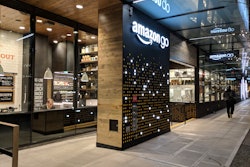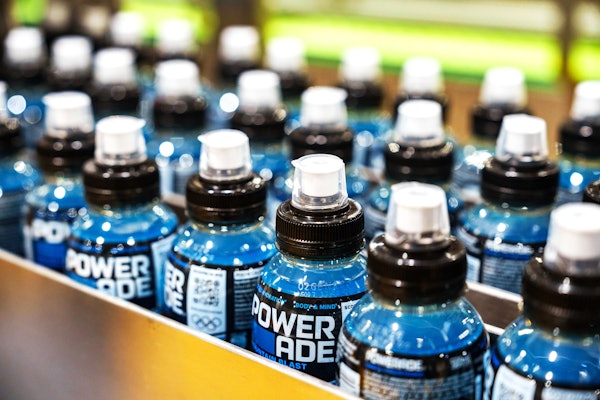Environmental degradation is a real and pressing problem. There is a need for pharmaceutical and medical device companies to look at their business practices and reduce environmental impacts from packaging wherever possible, including upstream at the natural resource level.
Intelligent supply chains – next quarter and beyond
For OPTEL GROUP and many others in the Innovation Supercluster Initiative (more on that later), major focus is being placed on traceability and intelligent supply chains. “We need to optimize the healthcare sector from manufacturing to the patient. In the food sector, there is also a lot of waste with a big impact on carbon footprint and the availability of resources,” says Louis Roy, President of OPTEL, a Certified B Corp.
Roy laments that people are generally so focused on looking at the next quarter, and not the next 10 years. He is hopeful that if consumers and suppliers start to see goods in a different light—such as the kilowatts, water and materials that go into producing a phone—they’ll make more environmentally friendly choices.
Initially, OPTEL concentrated on the manufacturing plant, with vision systems for measuring quality, later aggregating the data within the line and then within the plant. “From the plant level, we had the possibility to connect to other IT systems or government organizations, but we felt limited in leveraging the supply chain and helping our customers secure their supply chain,” says Roy. “There are a lot of regulations around the world, but most of them are incomplete and will not necessarily solve the issue of counterfeited products and inefficiencies and drug recalls. We felt compelled to build a supply chain that is connected from start to end.”
 With the acquisition of Verify Brand, they now have the capability to connect to government agencies, third parties and end users. In healthcare, the aim is complete supply chain connectivity, not only for compliance but to improve performance and reach end users more effectively.
With the acquisition of Verify Brand, they now have the capability to connect to government agencies, third parties and end users. In healthcare, the aim is complete supply chain connectivity, not only for compliance but to improve performance and reach end users more effectively.
Reaching the end user
Roy emphasizes the importance of going beyond the pharmacy and connecting with the actual end user. In some regions of the world, counterfeited drugs are inserted into the pharmacy. The pharmacist may be profiting significantly from counterfeits, so the solution to solve the counterfeit and recall problem is to go all the way to the end user.
Reaching the end user is also a valuable feature in food sectors, where there is significant waste and low efficiency rates. Roy notes, “In some cases, about 30% of the food that is produced is wasted. The connected supply chain that we’re bringing with Verify Brand and our plant-level system has an opportunity to impact business performance for those suppliers, grocery stores, etc.”
If the manufacturer wants to share the information, consumers can see which farm their milk comes from, and whether the farm is local. Manufacturers can monitor the quality of different farmers and sort out the milk that is less-than-ideal quality.
Back to basics
The connected supply chain doesn’t begin at the manufacturing plant. The raw materials are a key component of the circular economy.
OPTEL is looking upstream at the traceability of natural resources through its recent acquisition of GeoTraceability. “Our customers, initially, manufacturers, will now have unprecedented visibility into the origin of the raw materials that they transform,” says Roy. 
How does this traceability improve business goals and conserve resources? Roy offers the following examples:
-
The ability to trace and sort raw materials can allow for items of specific quality go to the transformers (manufacturers) who need that level of quality, ultimately reducing waste. If a transformer cannot use a given quality of lumber, coffee or potatoes, for instance, they often don’t have the capability to redirect those items and they become waste.
-
In food and pharmaceuticals, forecasting demand is a science, taking into account external factors such as weather and cultural events. There is often waste because a manufacturer didn’t plan for a certain event, which ends up having to destroy product. With more robust traceability data, manufacturers and raw material suppliers can more accurately predict consumer needs to conserve resources.
-
In cases where returns and reconditioning are possible, it’s important for manufacturers to have connectivity with their end users. With inkjet printer cartridges, a manufacturer has found success in connecting with business offices and consumers to redirect the used cartridges and refill them, which is a positive for business and the environment.
OPTEL recently released a case study describing GeoTraceability’s development of a system to help a palm oil mill, making it the first mill of its kind to map and survey all small suppliers in an electronic database and demonstrate traceability from field to mill weighbridge for all independent smallholder suppliers. The technology also allowed a leading group of palm oil plantation companies to finish mapping all their suppliers to their own mills in February 2018.
Supercluster initiative
OPTEL is a member of the AI-Powered Supply Chain Consortium, also known as SCALE.AI, a Canadian industry-led consortium working on:
-
Shaping a new end-to-end supply chain platform
-
Bolstering Canada’s leadership in artificial intelligence (AI)
-
Accelerating industry adoption of enabling technologies
The consortium covers consumer goods and retail, industrial goods and manufacturing, infrastructure and construction, and has nearly 120 industrial partners, enabling organizations and research institutions.
The consortium was named one of the five official winners of the Innovation Supercluster Initiative in February, a $950 million Canadian initiative to foster technical leadership and accelerate economic growth. “They recognize that a drastic change is needed in our supply chains,” says Roy.
Closing thoughts
The intelligent supply chain represents a huge opportunity for machine builders and distribution companies to push for more automation. Increased tracking capabilities require more advanced automation.
 Objectively, most people know that we have an unsustainable ecosystem, wrought with inefficiencies and excessive waste.“Our goal is two-fold,” explains Roy. “Respect the planetary limits of resources and improve business performance for customers.”
Objectively, most people know that we have an unsustainable ecosystem, wrought with inefficiencies and excessive waste.“Our goal is two-fold,” explains Roy. “Respect the planetary limits of resources and improve business performance for customers.”

 With the acquisition of Verify Brand, they now have the capability to connect to government agencies, third parties and end users. In healthcare, the aim is complete supply chain connectivity, not only for compliance but to improve performance and reach end users more effectively.
With the acquisition of Verify Brand, they now have the capability to connect to government agencies, third parties and end users. In healthcare, the aim is complete supply chain connectivity, not only for compliance but to improve performance and reach end users more effectively.
 Objectively, most people know that we have an unsustainable ecosystem, wrought with inefficiencies and excessive waste.“Our goal is two-fold,” explains Roy. “Respect the planetary limits of resources and improve business performance for customers.”
Objectively, most people know that we have an unsustainable ecosystem, wrought with inefficiencies and excessive waste.“Our goal is two-fold,” explains Roy. “Respect the planetary limits of resources and improve business performance for customers.”
























